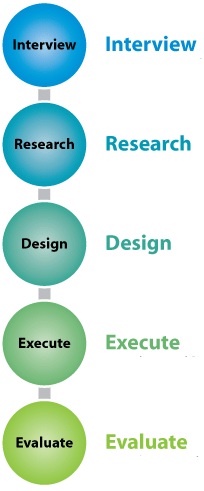The Engineering Design Process:
There are many interpretations of steps of the engineering design process, such as the one illustrated in the diagram to the right. There is no single "correct" interpretation of the design process, because the process itself can cover such a broad range of applications. Below is our take on the engineering design process, and how it applies to our project. The first step in tackling a design problem is to understand the problem itself. This entails meeting with the customer and garnering their expectations. With the customer's expectations in mind, you then do research on the technologies needed to fulfill the customer's wishes. Often there will be some difference between what is possible or affordible, and what is desired. Communication with the customer at this first stage is essential so they have a realistic expectation for your work, both in scope and budget. Our sponsor did not request a particular outcome for this senior project. APS supplied $5000 to support a project involving power systems, but did not request anything specific. Out technical advisor, Dr. Allison Kipple, came up with the goal of our project so our team had a great nearby resource to define the project. After meeting with Dr. Kipple, we did research into transients, and the hardware that we would need to procure to put together the portable detection system. Through repeated meetings with Dr. Kipple we solidified the goals of our project, and proceeded to work on deliverables. The next step in the design process is to come up with the design and put it together. We have been putting together a complete design and proposal which will be submitted to APS for purchase at a later time. Due to budget issues we will not be assembling the actual system this semester. The final step in the design process is evaluating the assembled system. If the design was solid, then small refinements are implemented to fully satisfy the design requirement. If it becomes evident in this final stage that the design is flawed, the process begins again at the design stage. Sometimes design failures are a great way to see the direction to design successes. Our team will not have the chance with this project to test our designed product, as no physical product will be produced. Our success or failure will be measured by the degree in which future teams interested in this project benefit from our work. Links: |


A Portable Transient Detection System |
Funded by: sponsored by Dr. Allison Kipple
sponsored by Dr. Allison Kipple
|